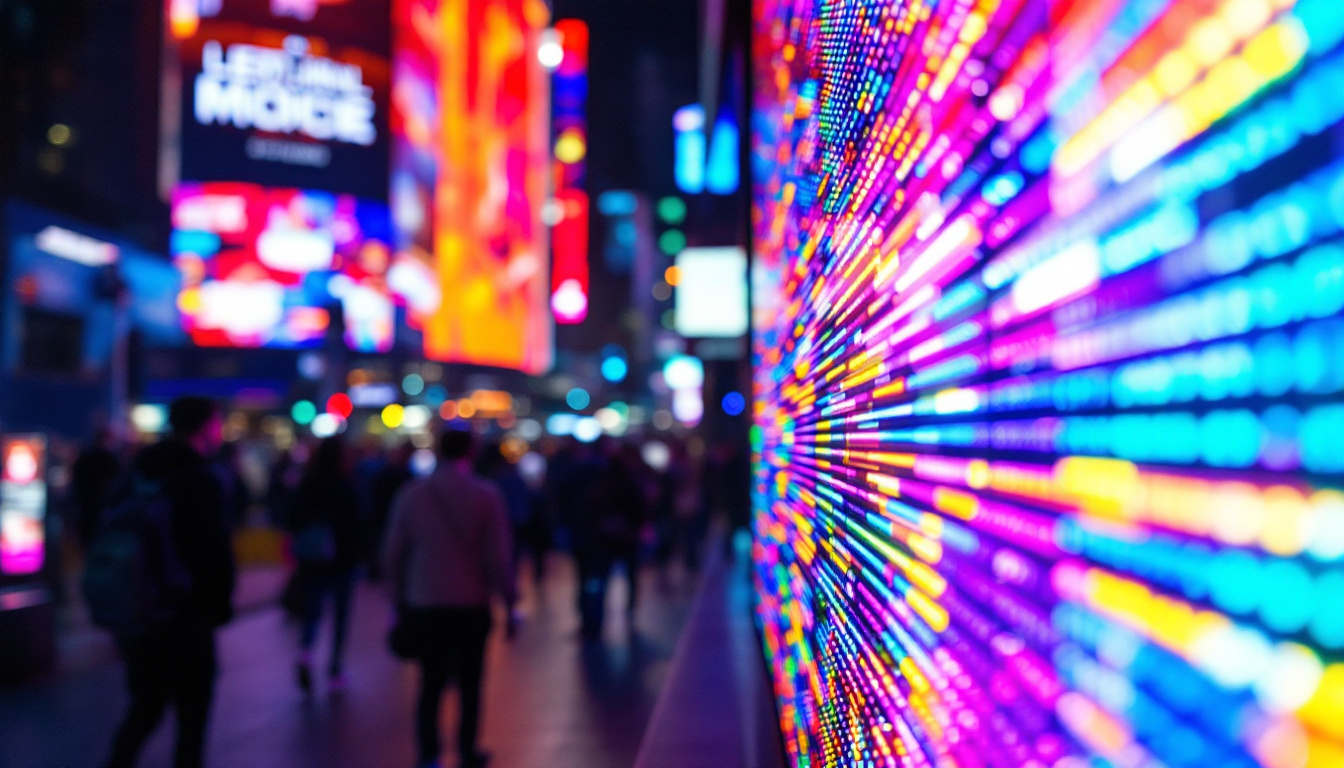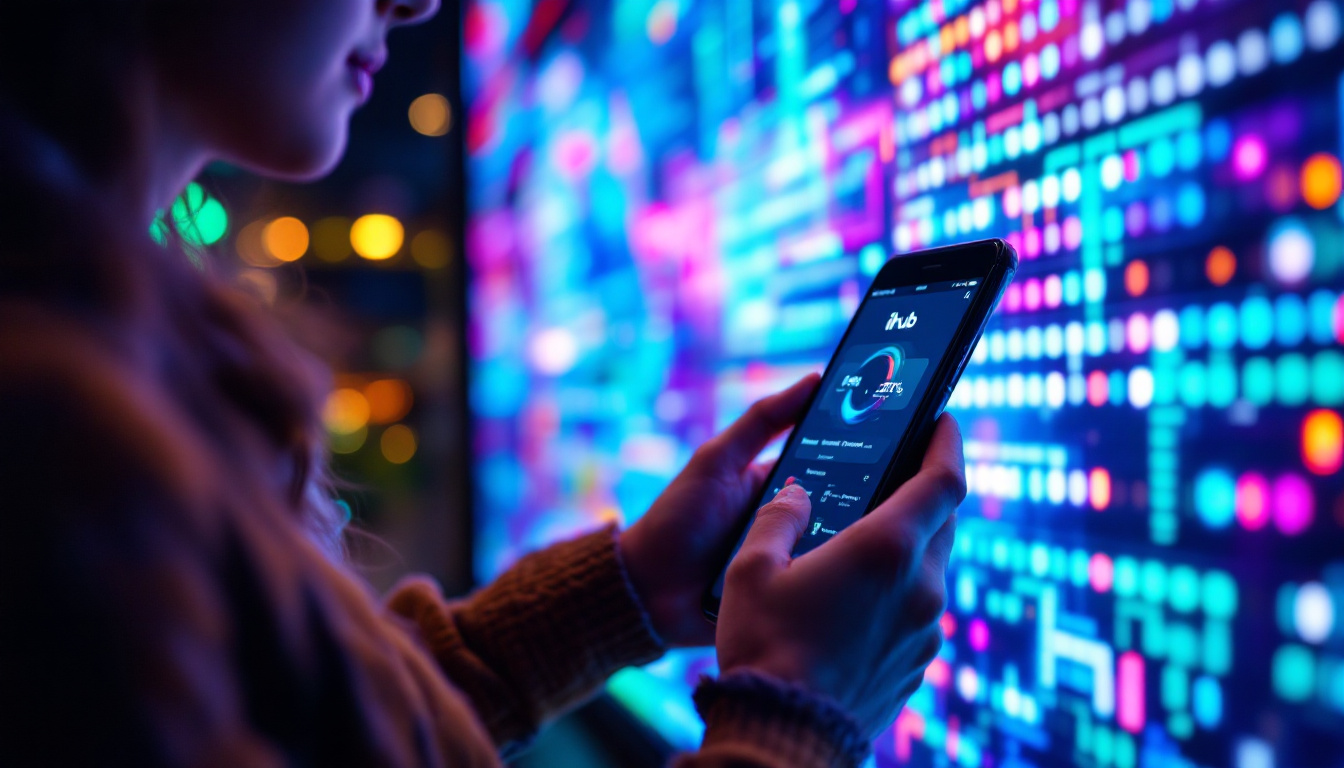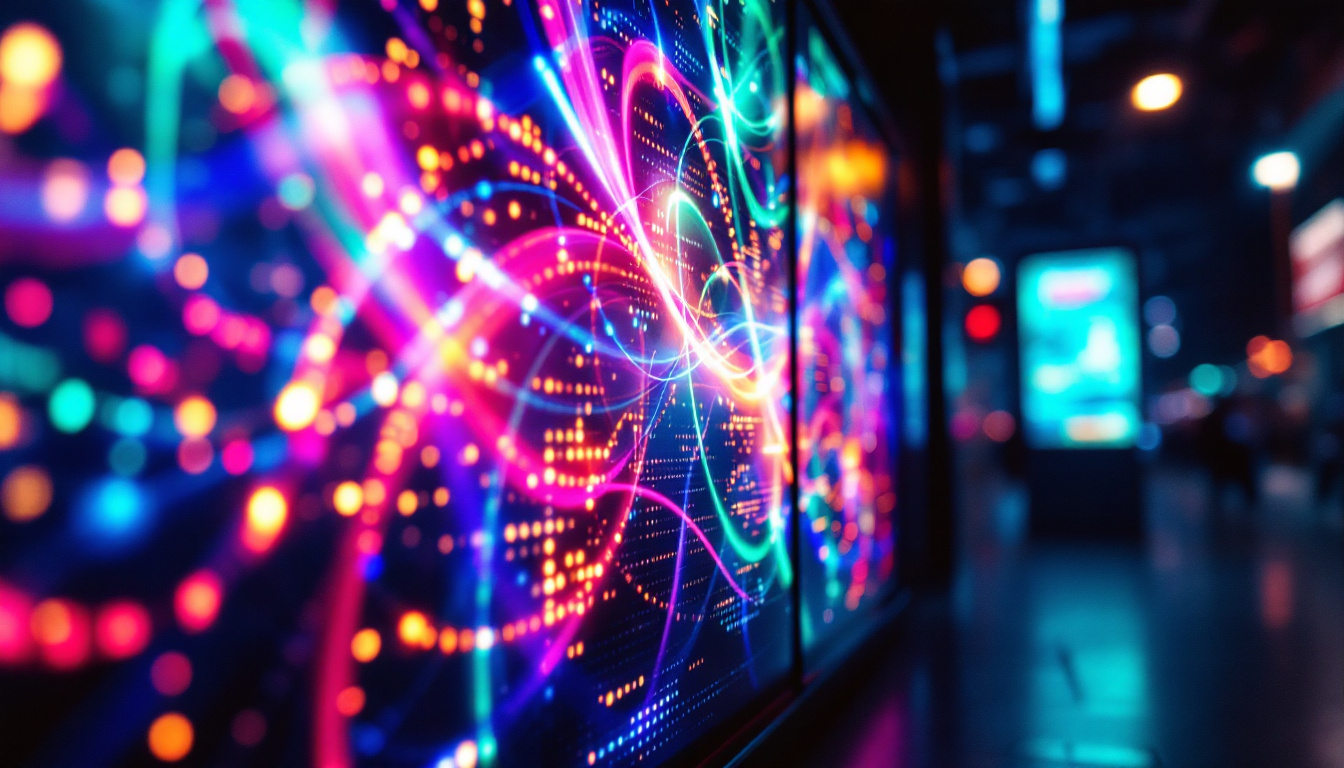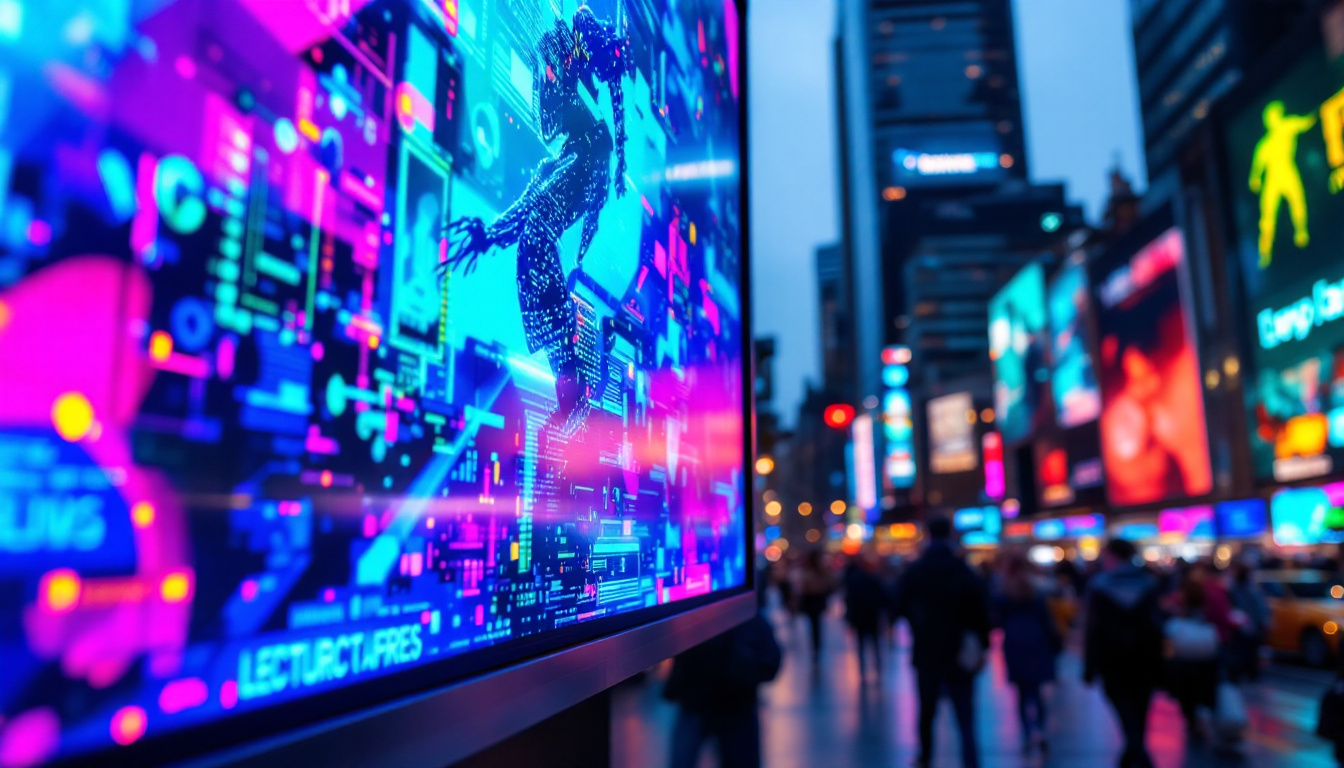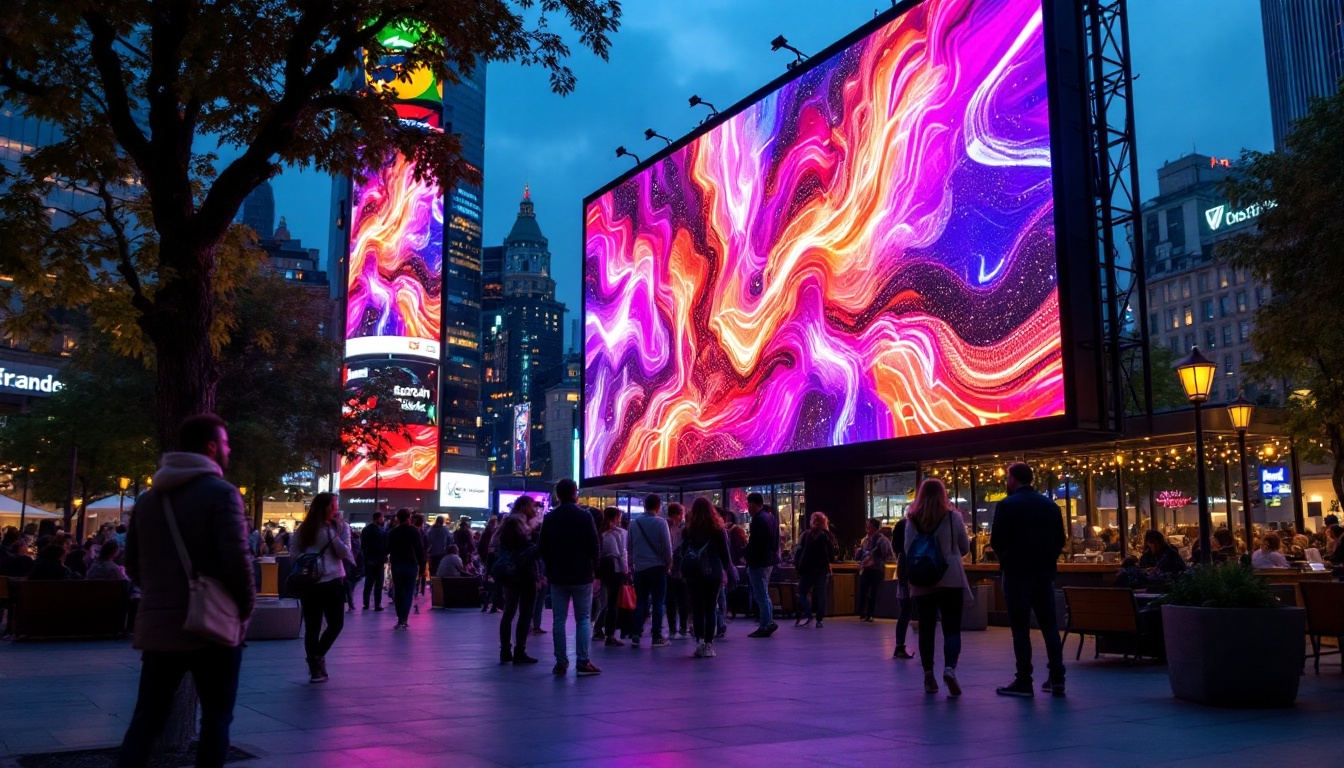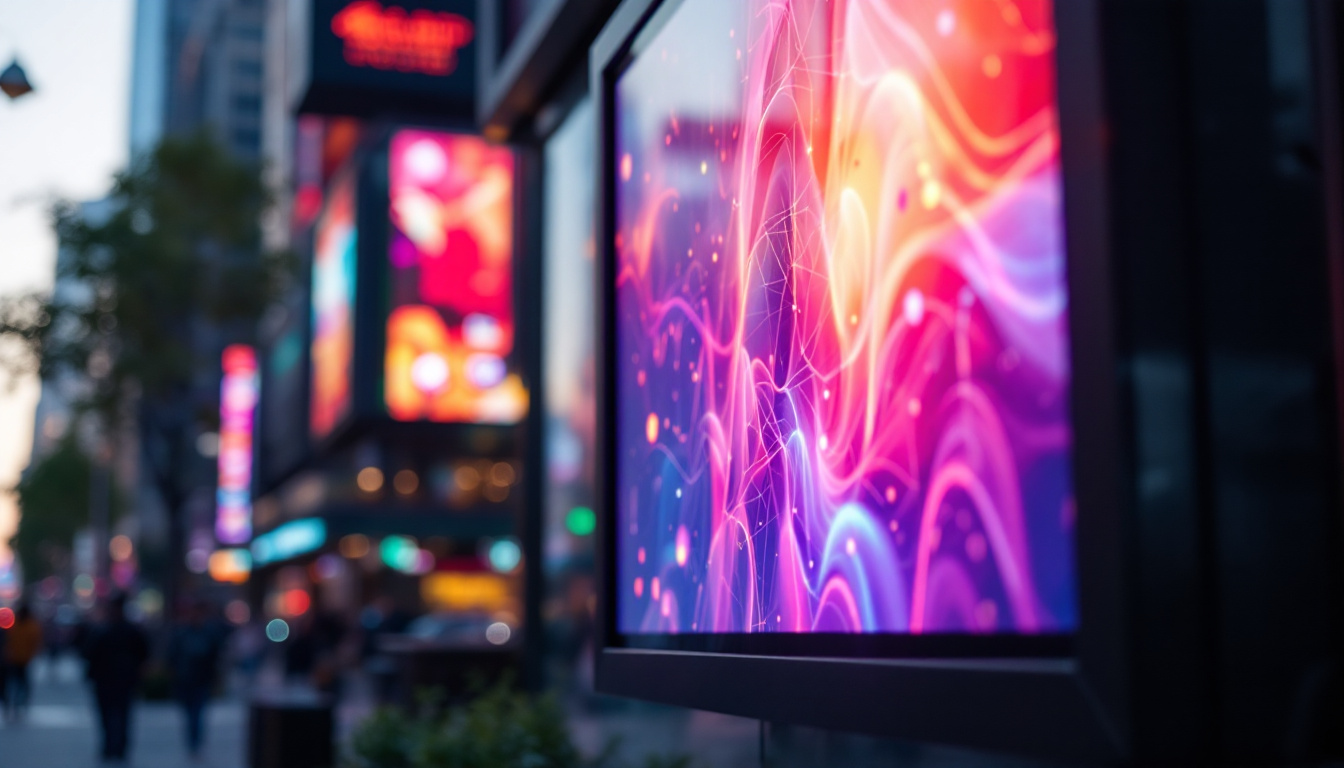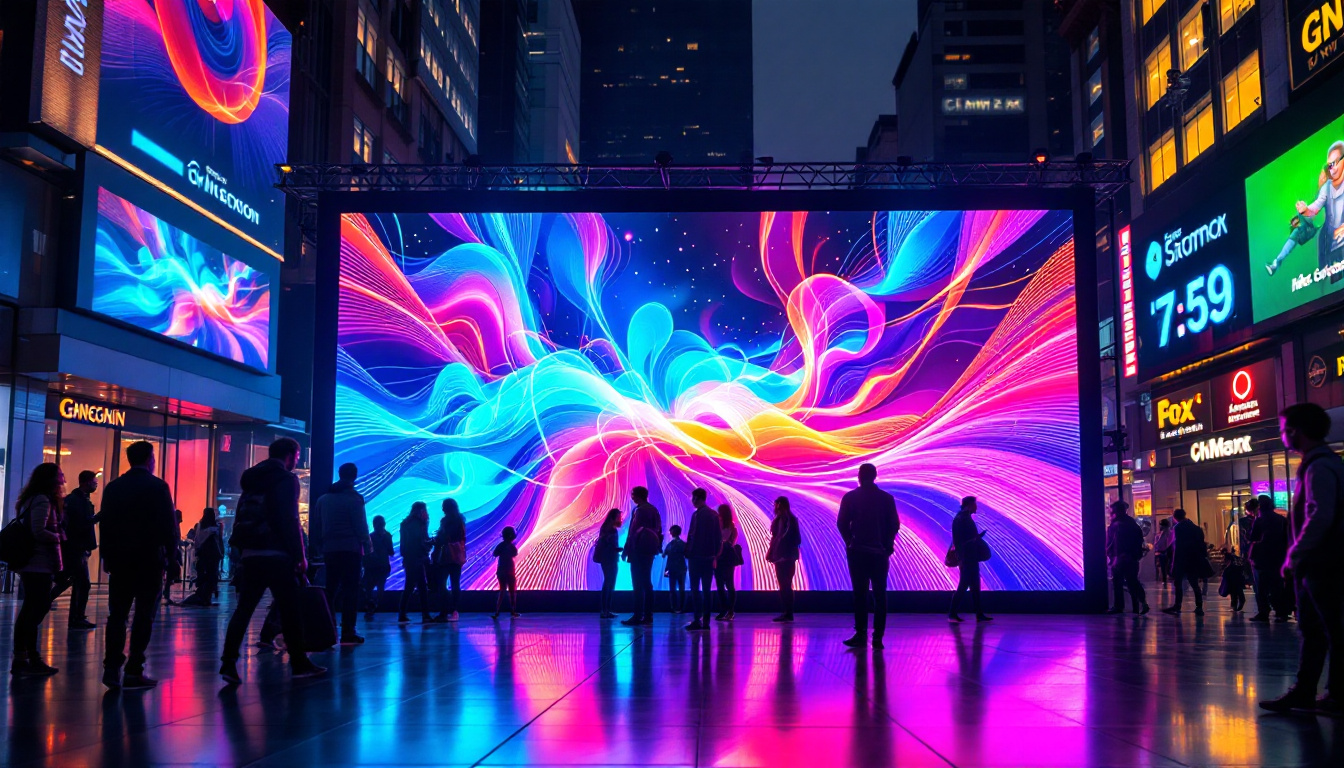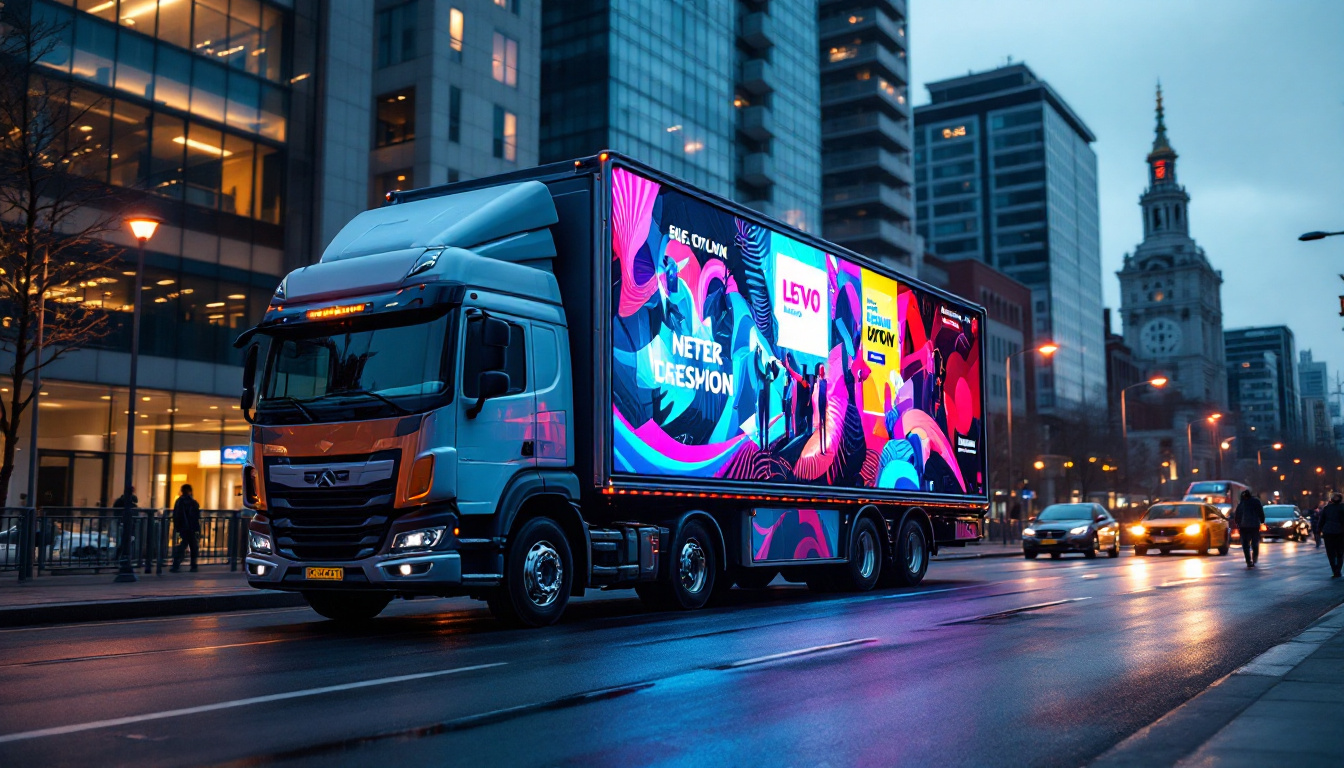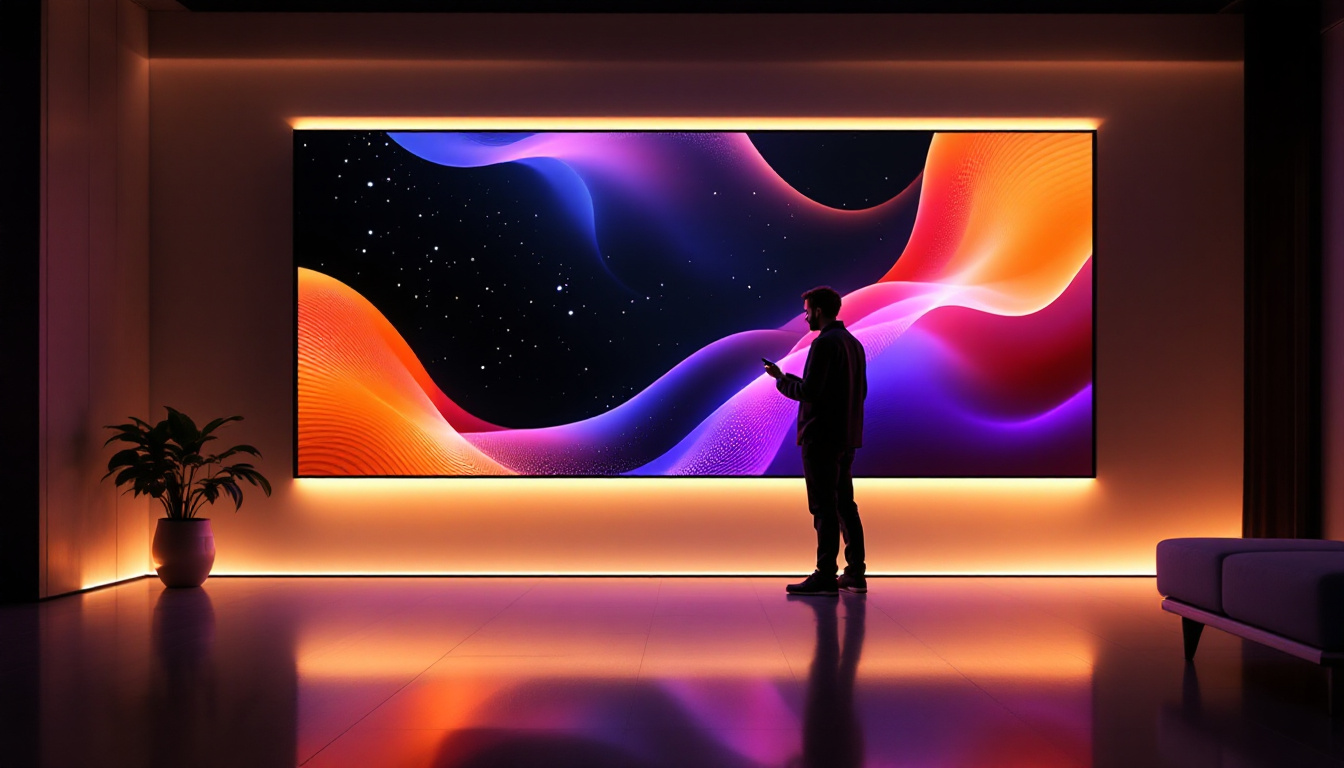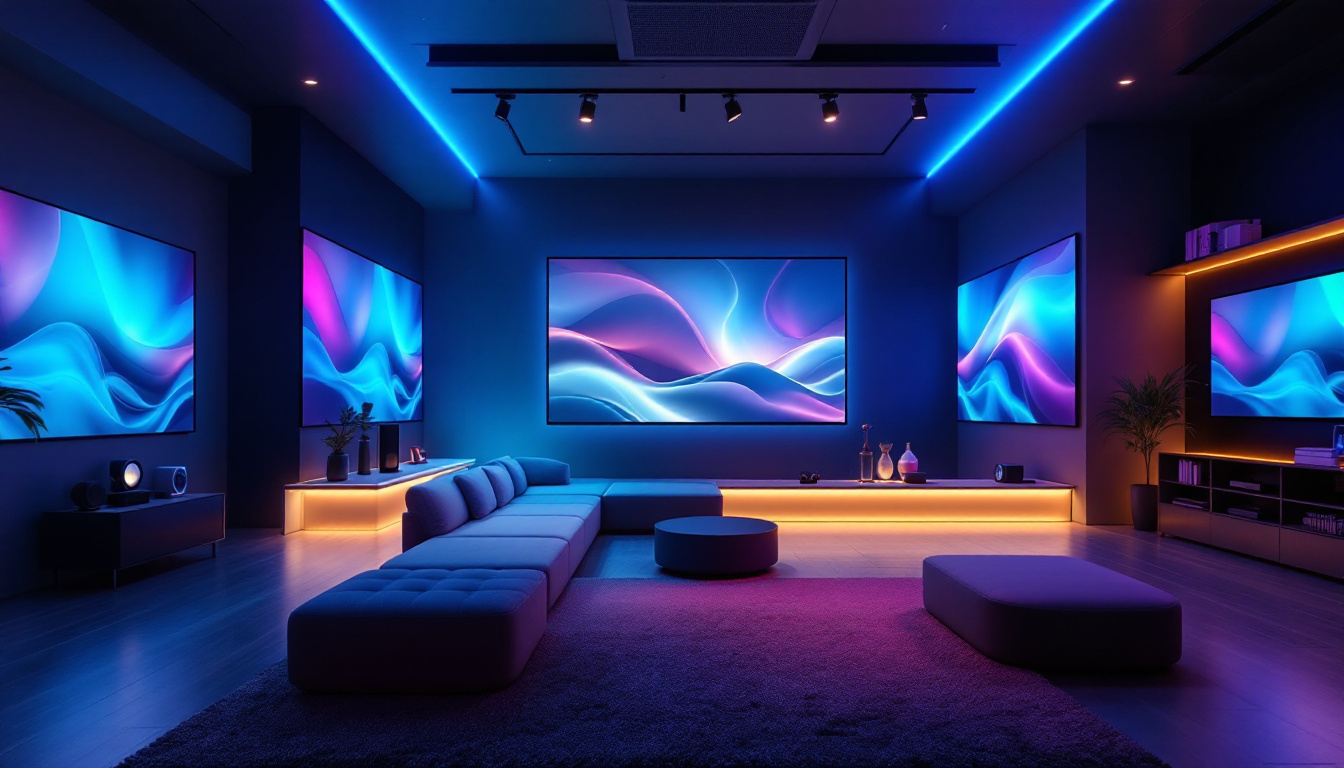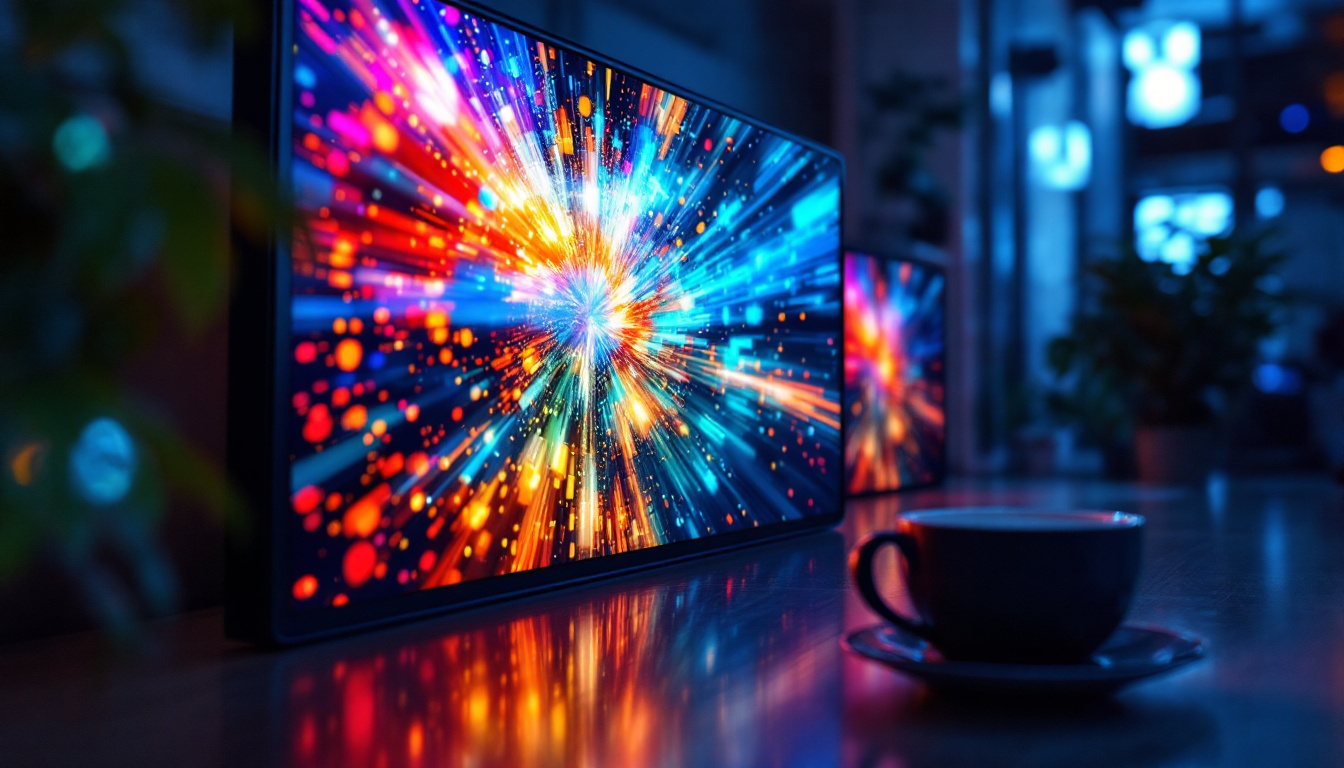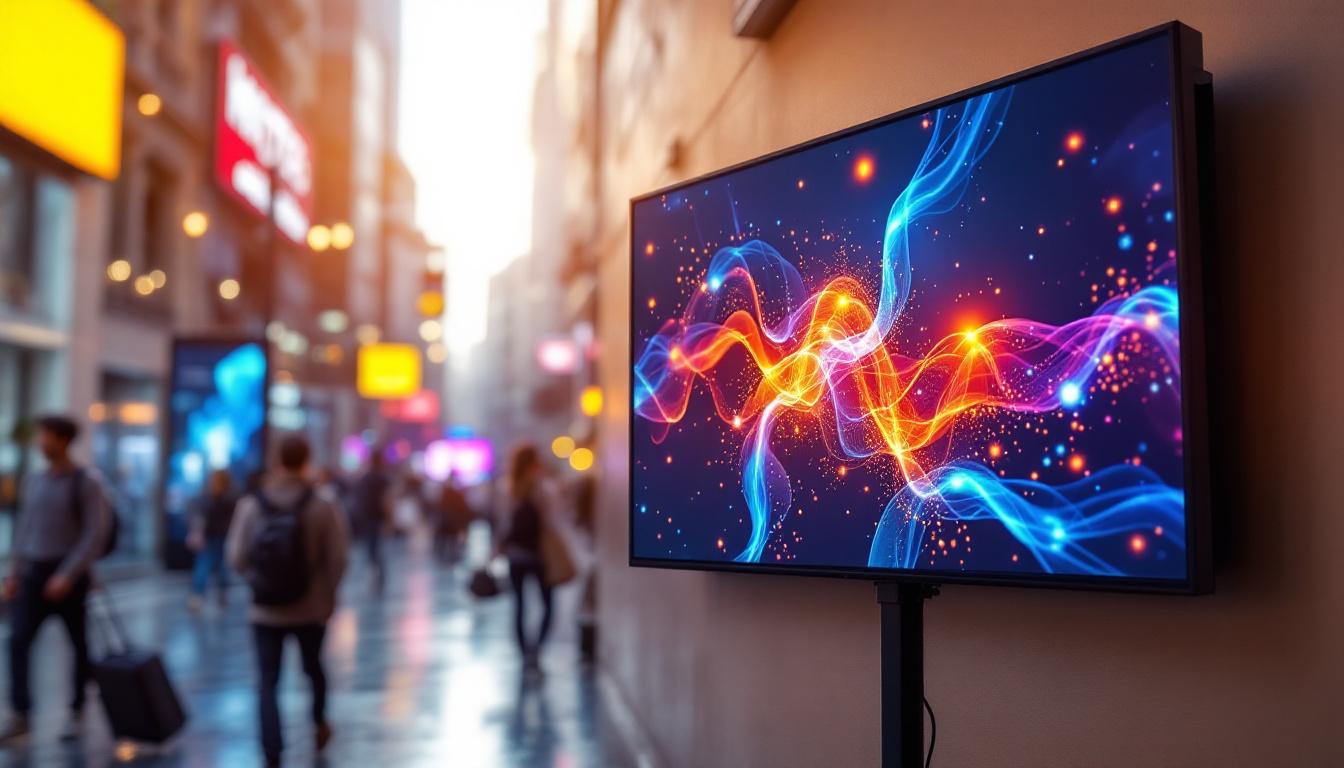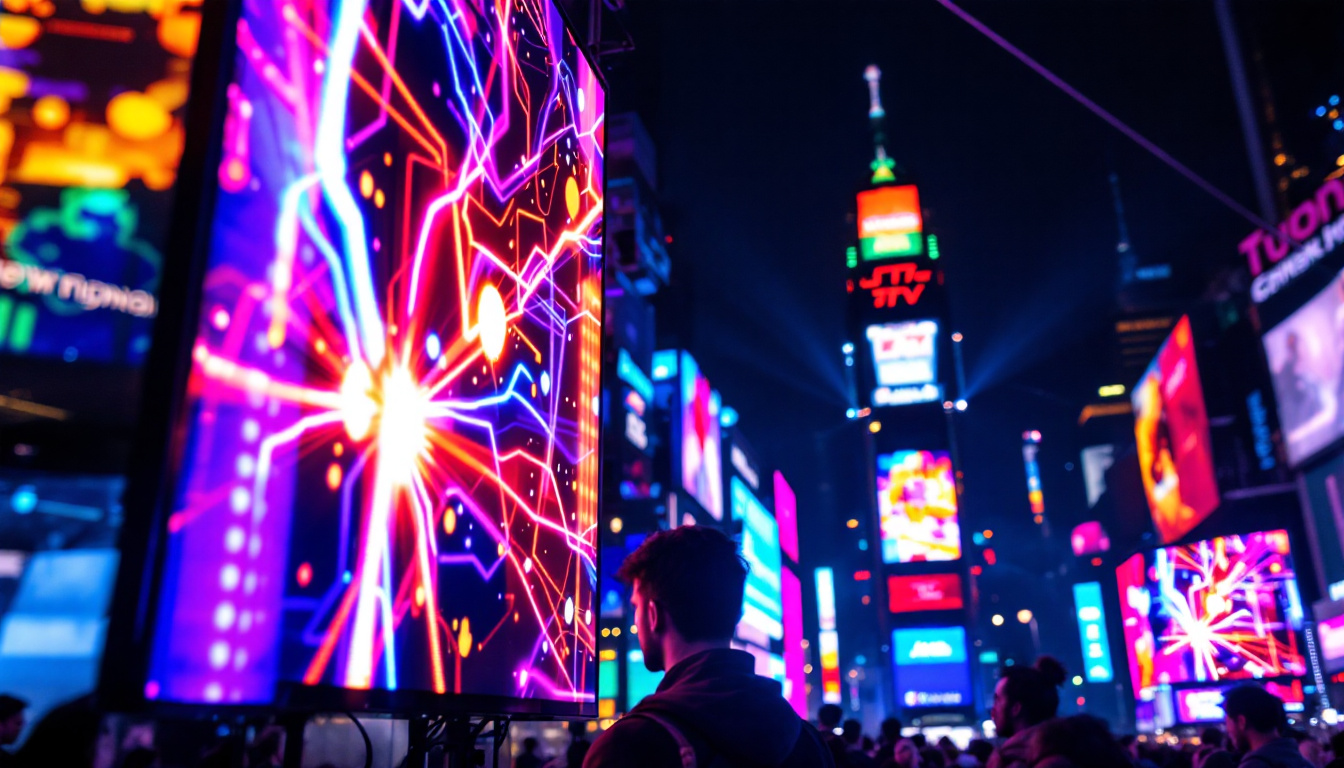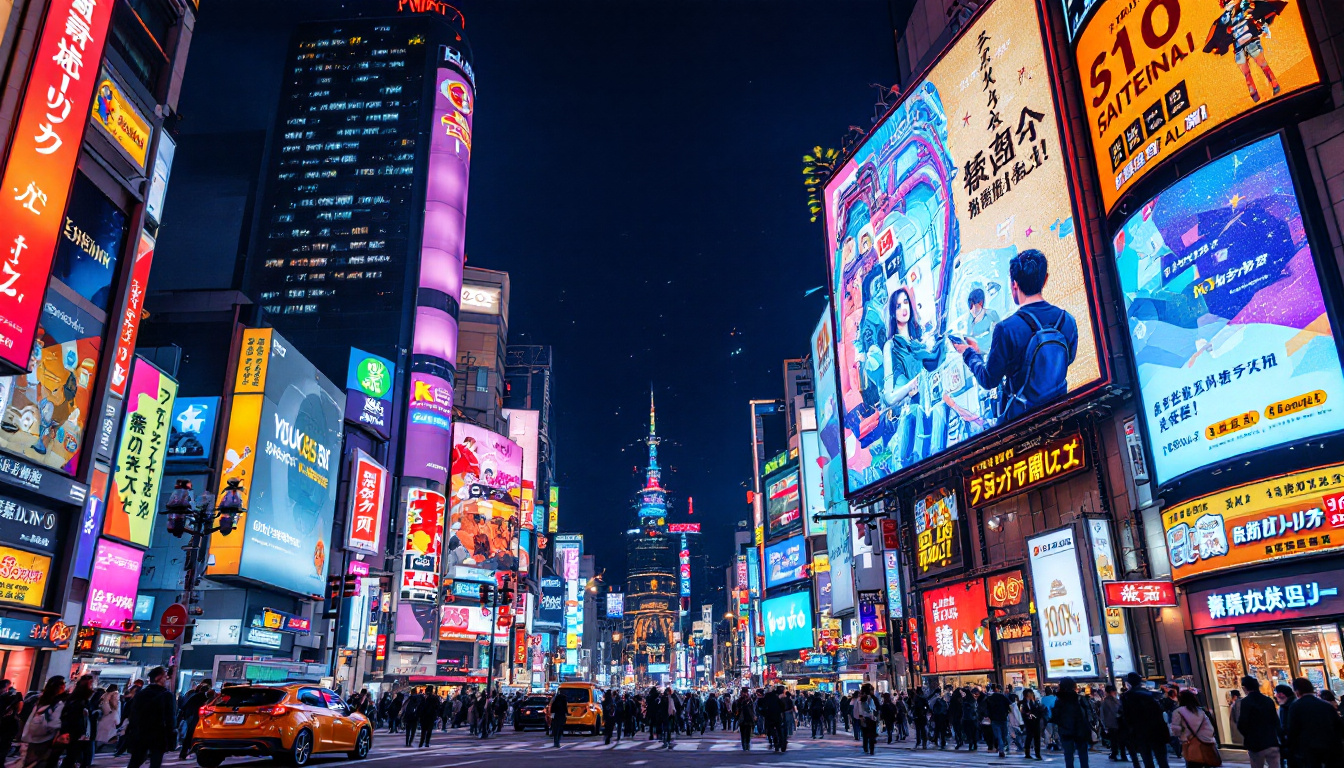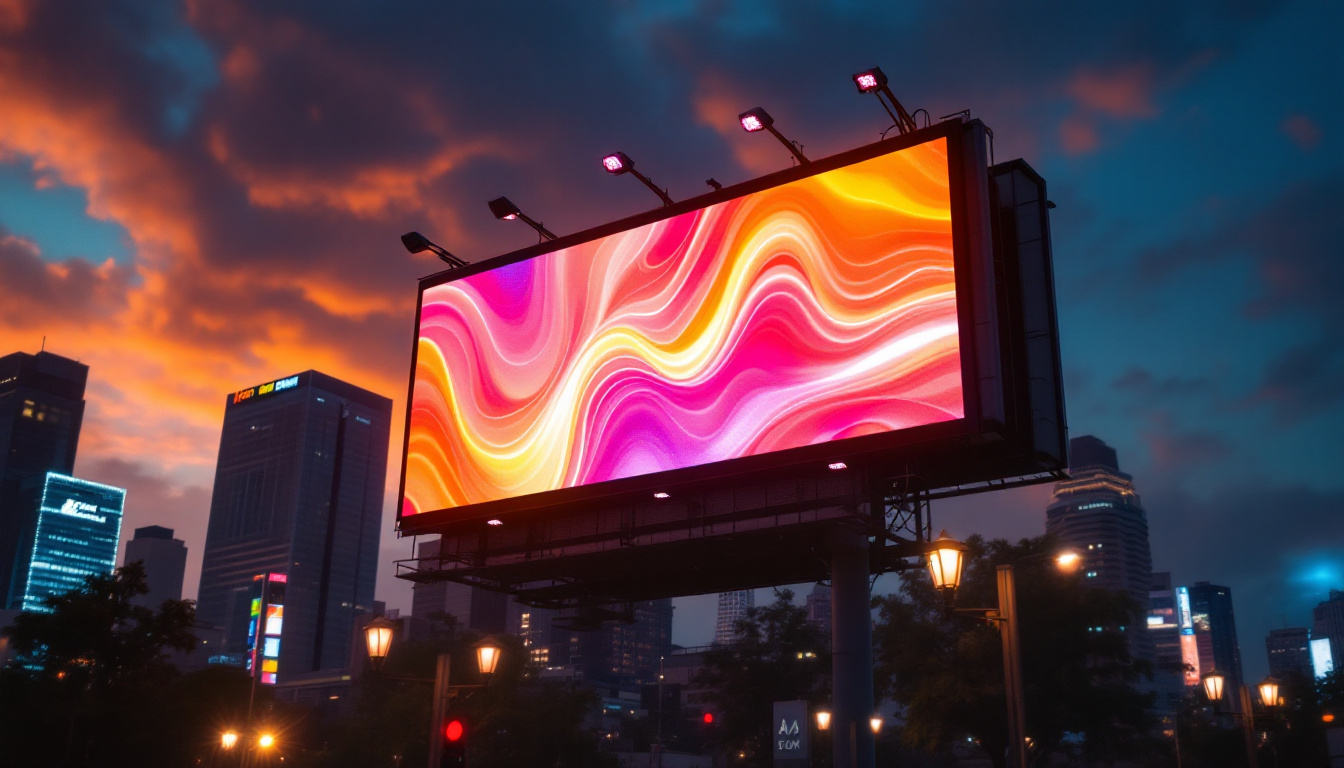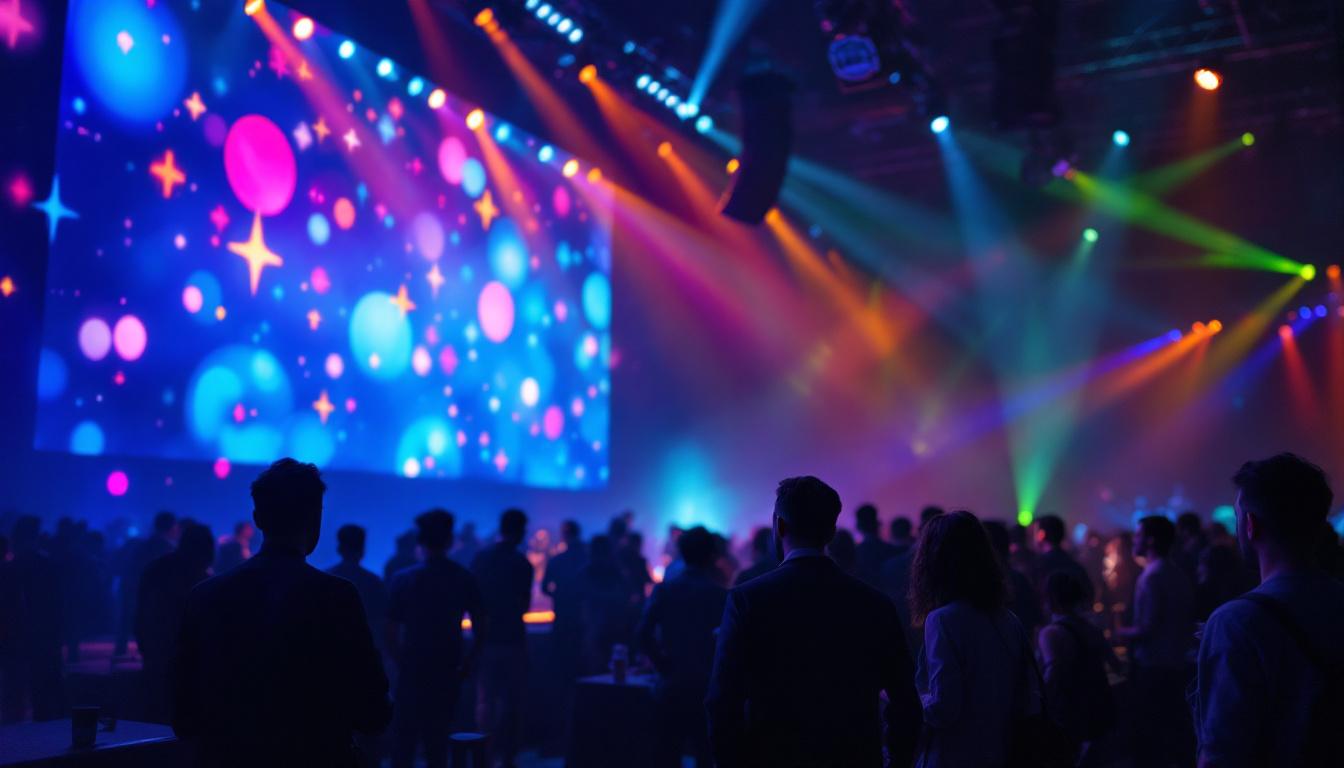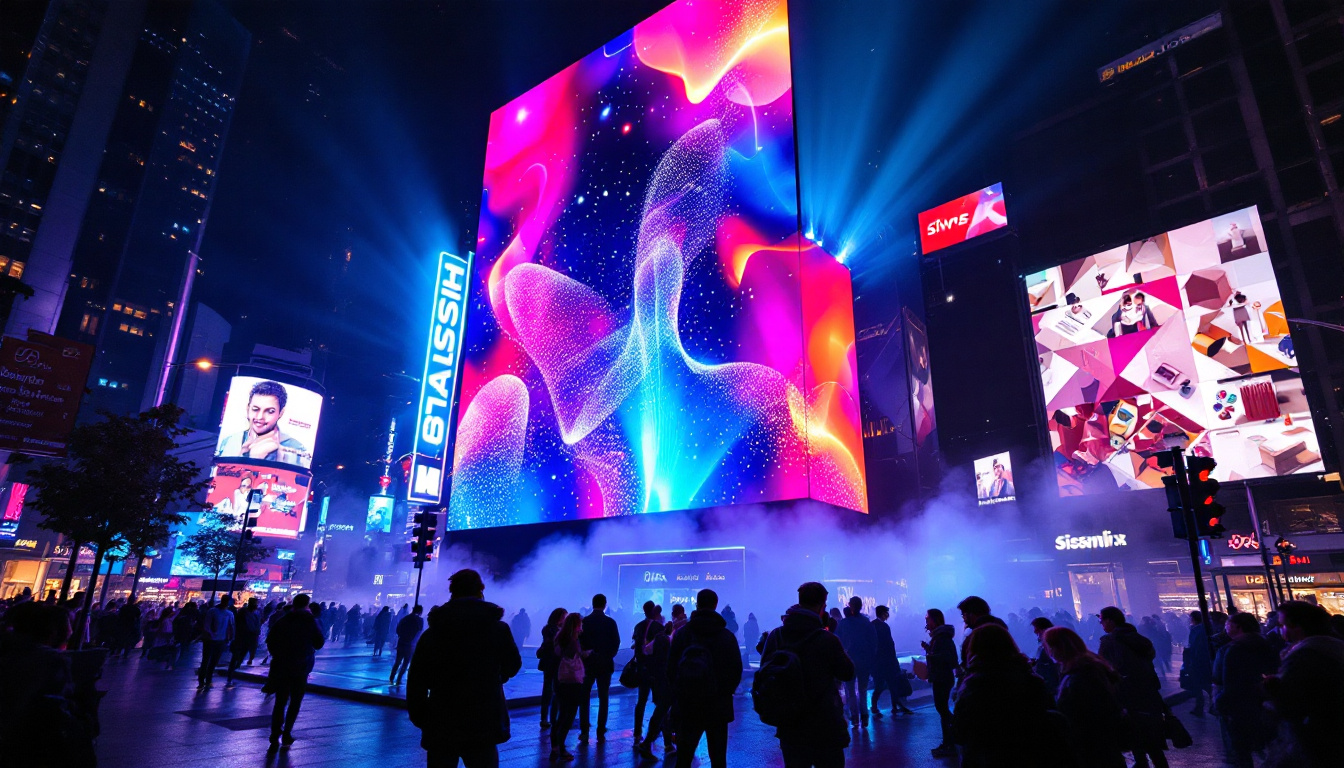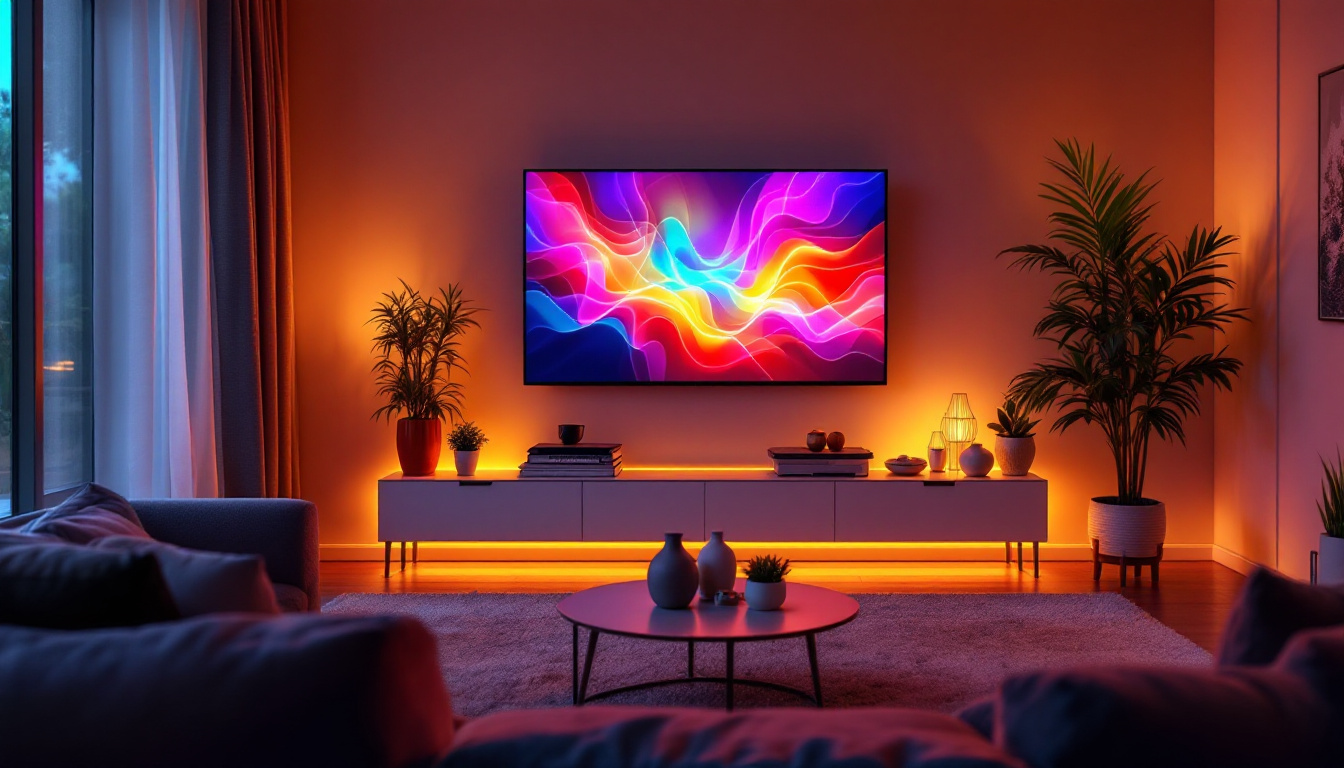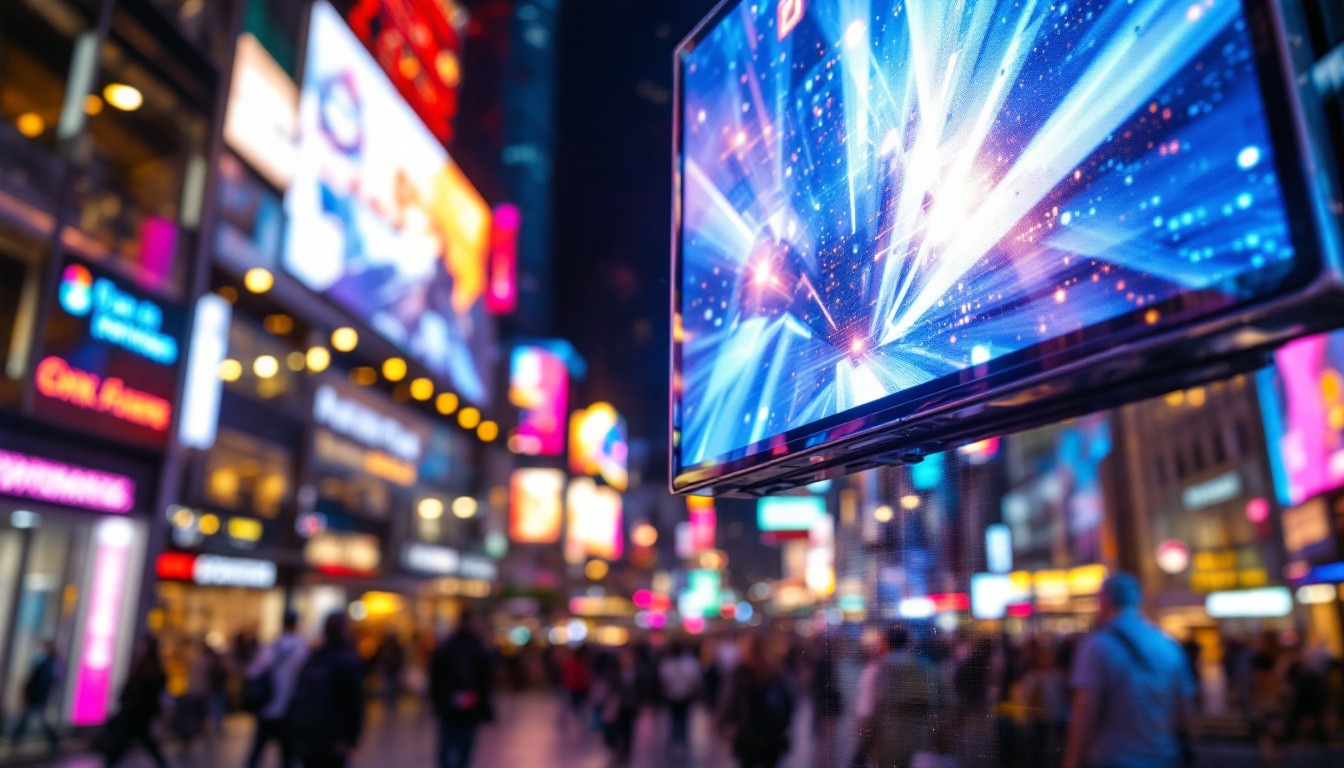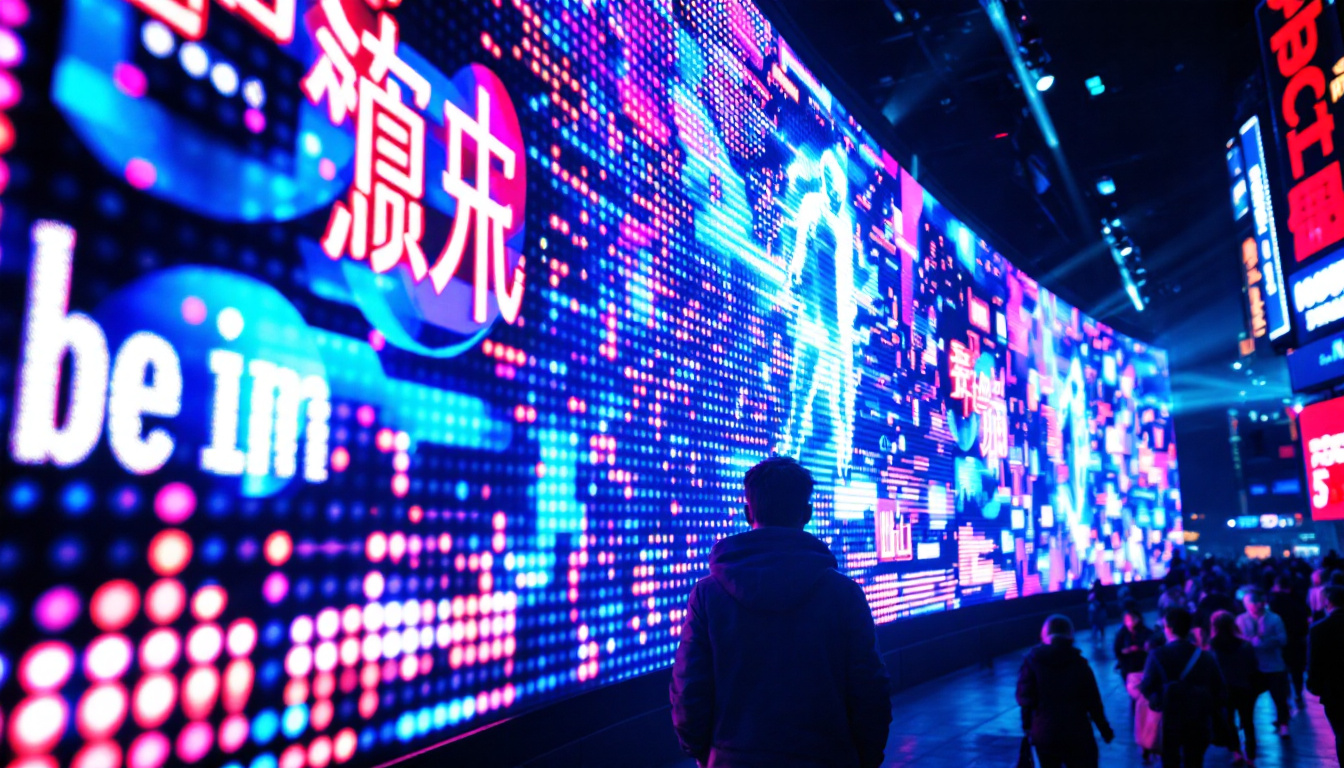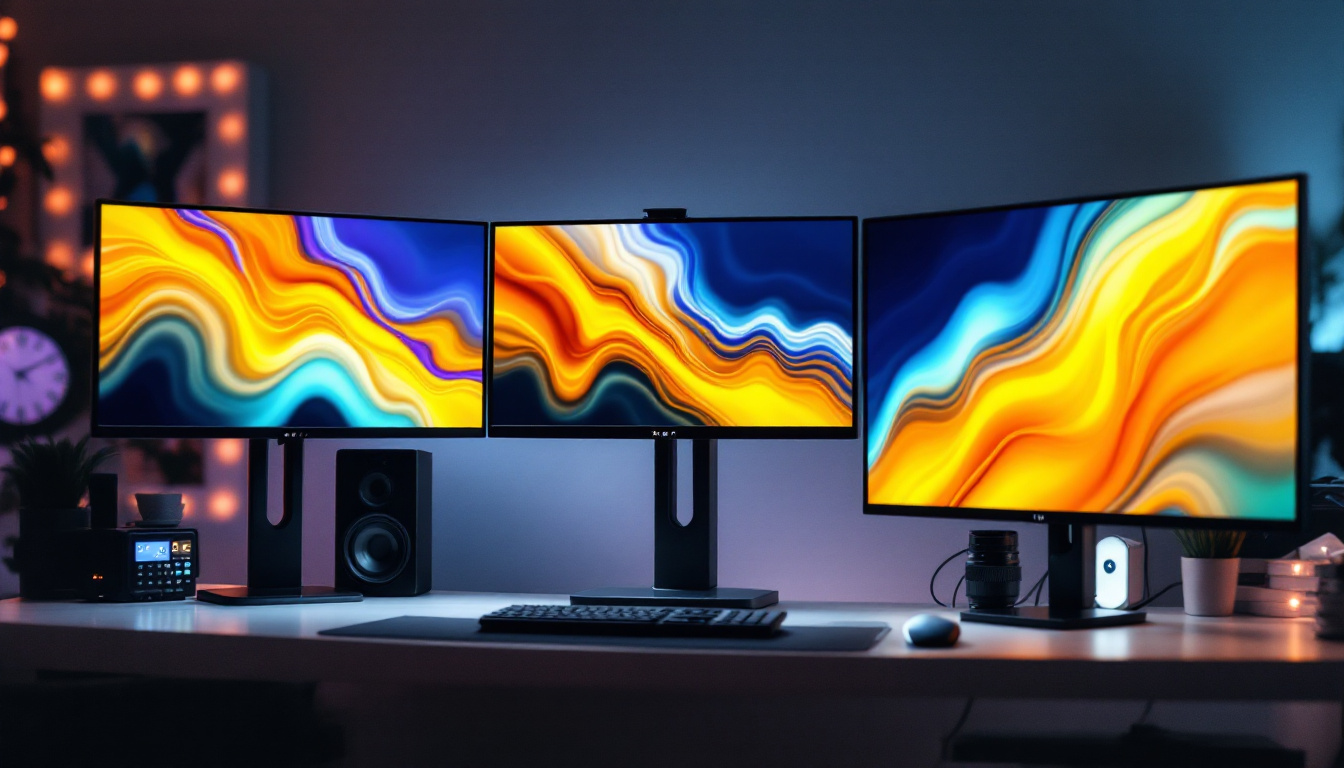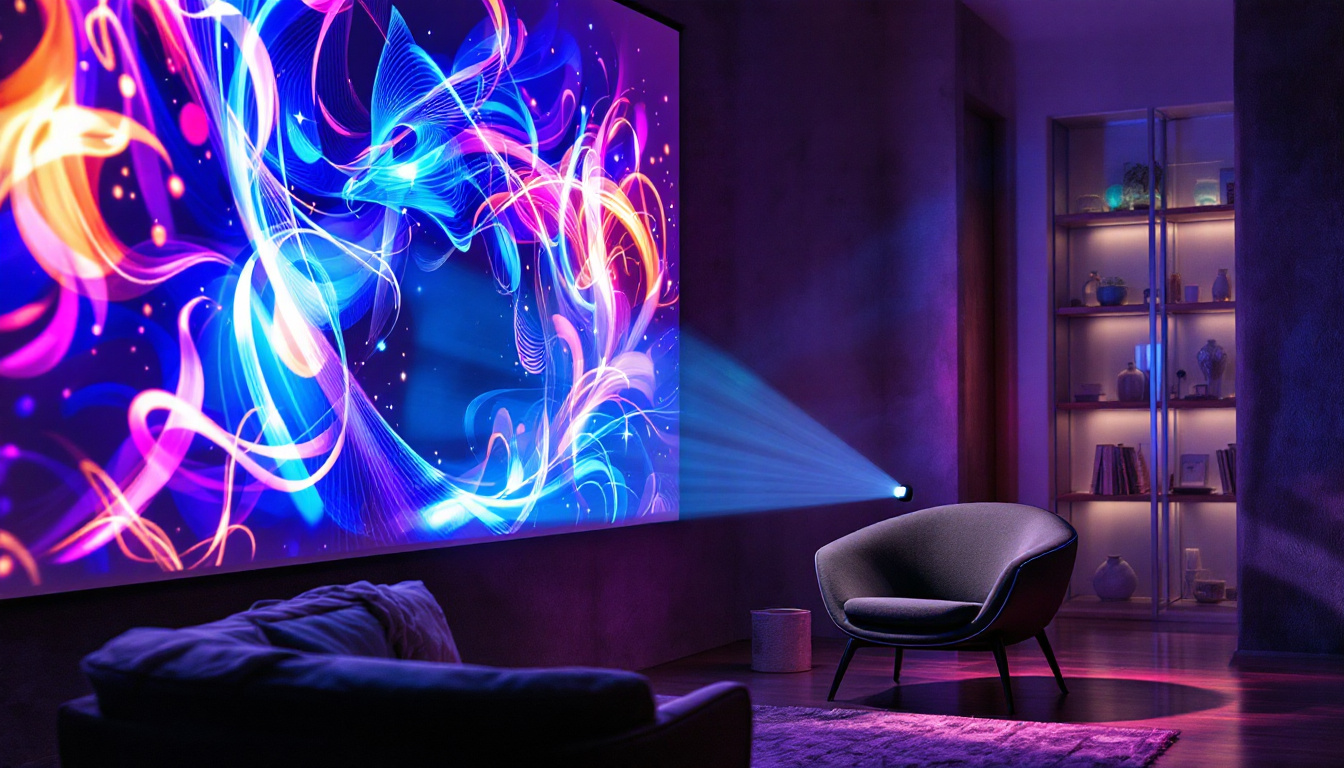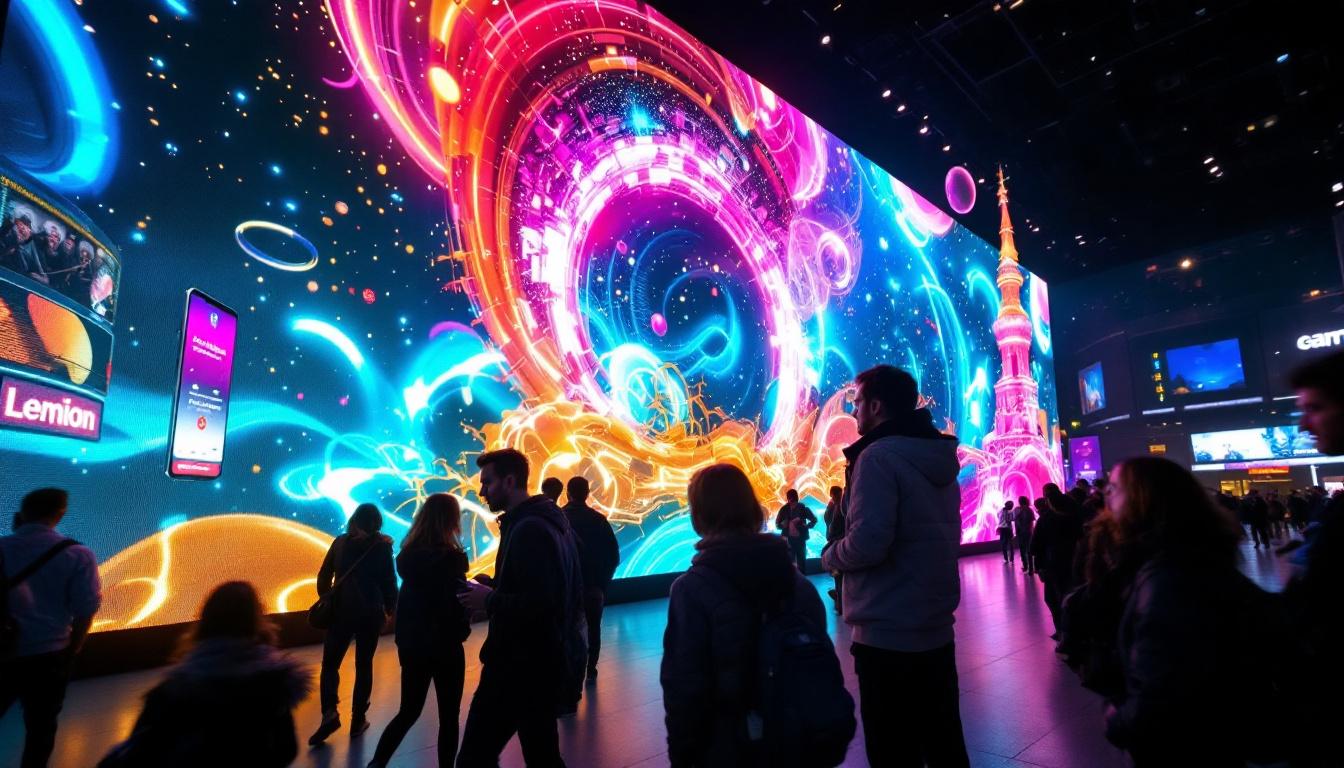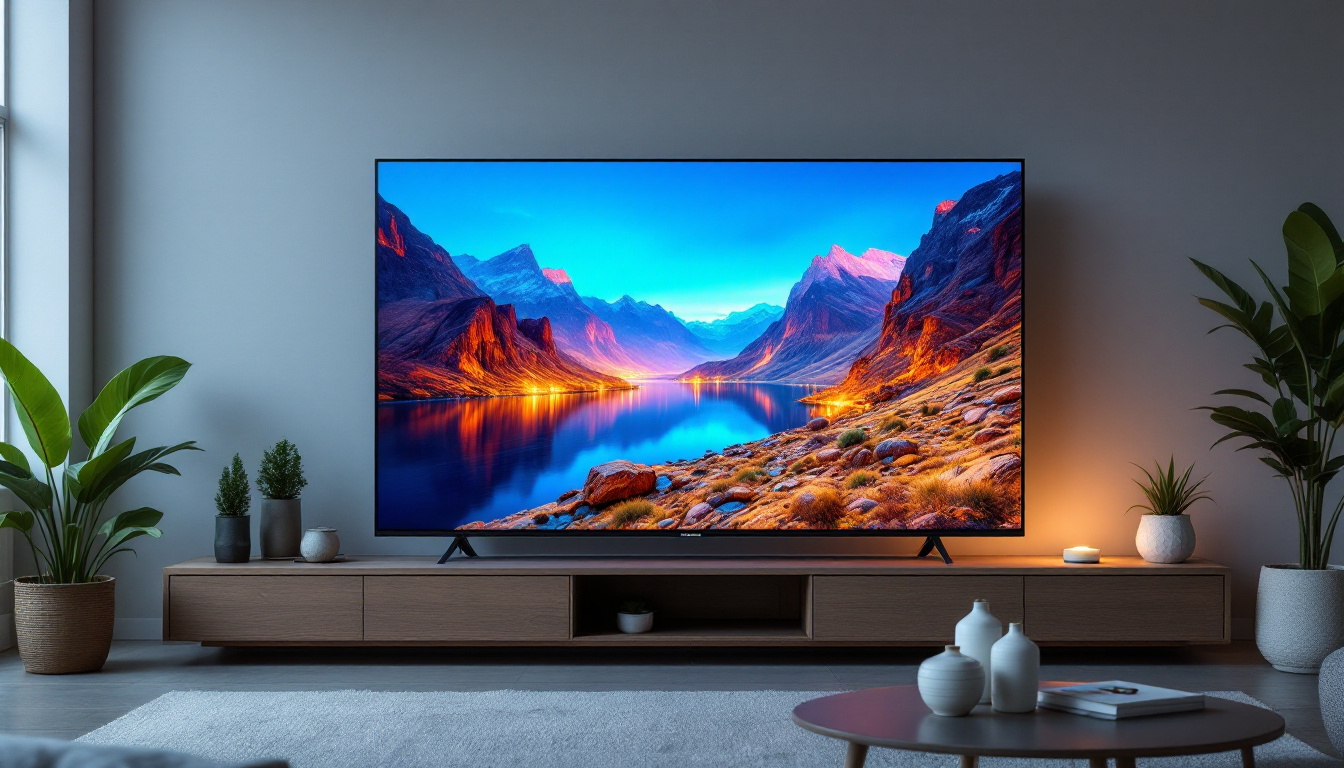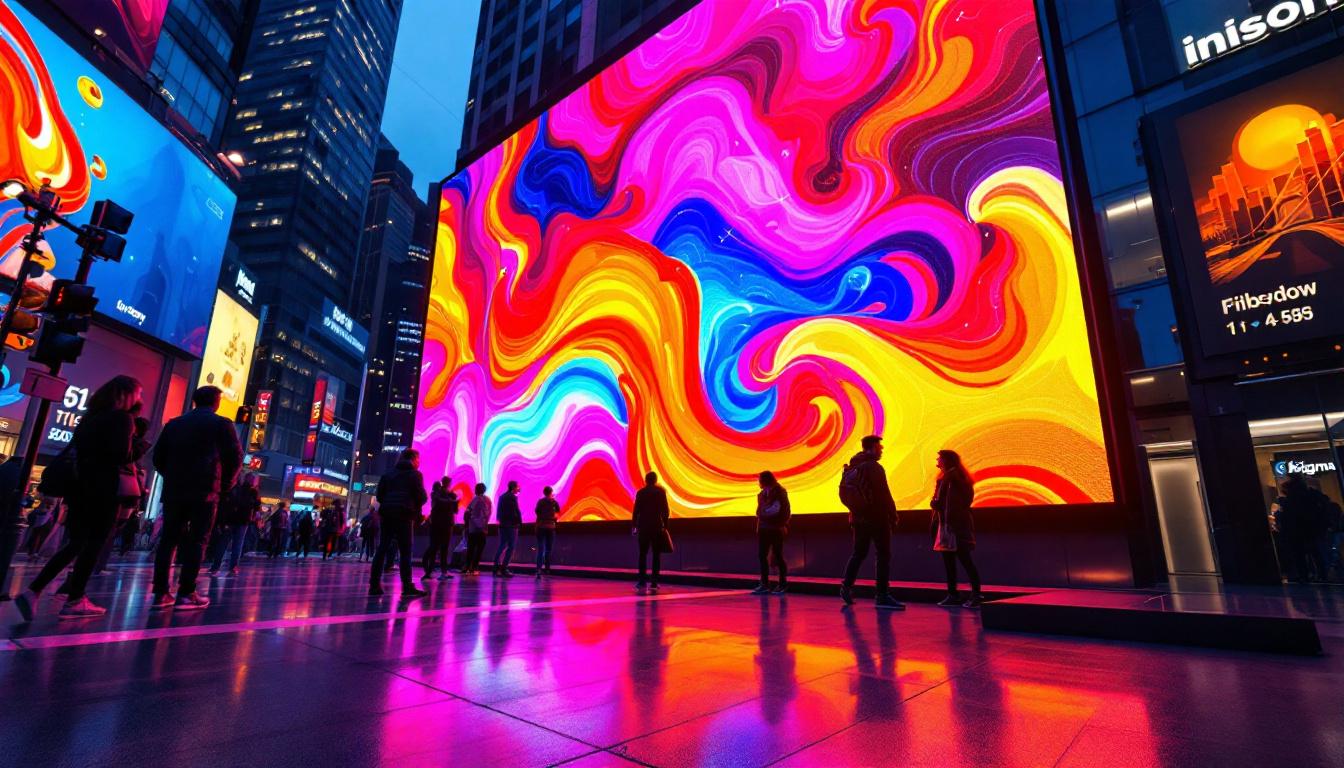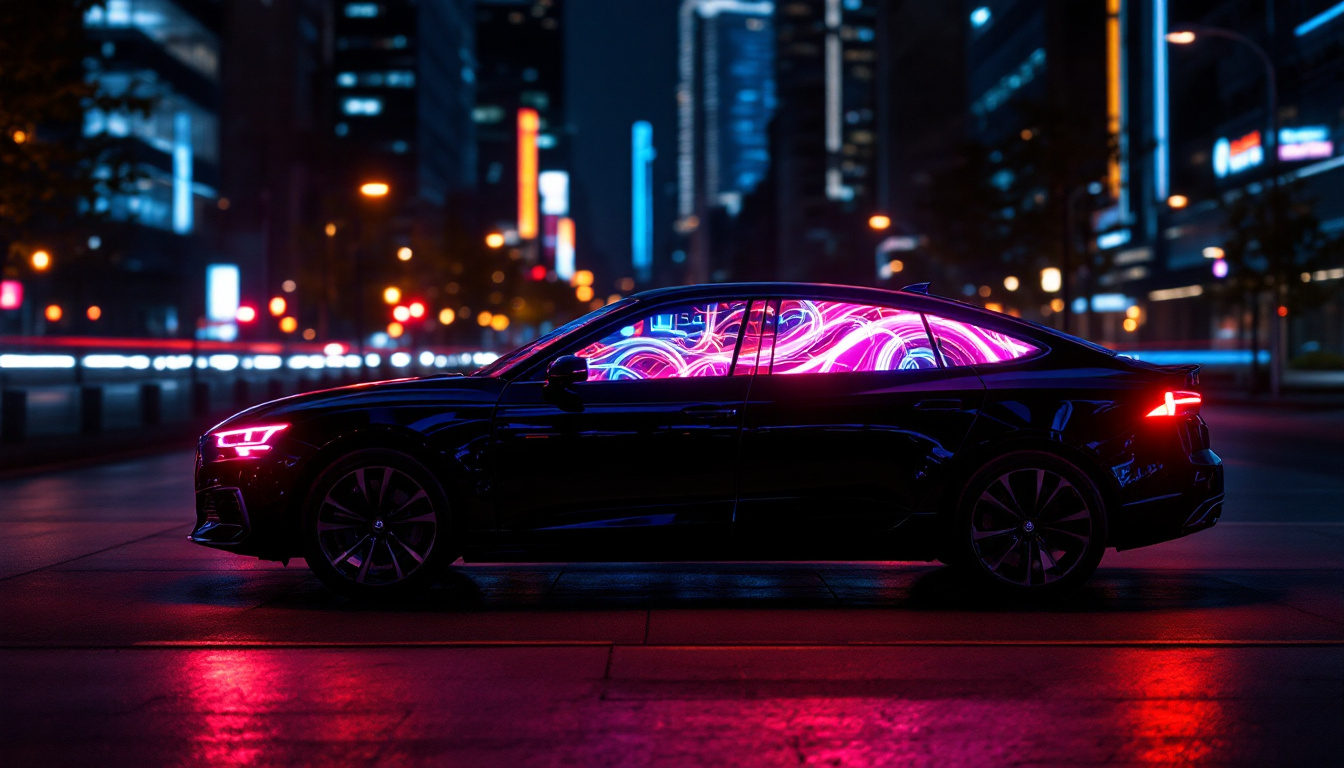In today’s digital age, LED displays have become an integral part of various industries, transforming the way information is presented and consumed. Their versatility, brightness, and energy efficiency make them a popular choice for advertising, events, and even architectural designs. This article delves into the world of LED displays, exploring their functionality, types, applications, and the benefits they offer.
Understanding LED Technology
LED, or Light Emitting Diode, technology represents a significant advancement in lighting and display systems. Unlike traditional incandescent bulbs, LEDs emit light when an electric current passes through a semiconductor material. This process not only enhances efficiency but also contributes to the longevity of the display. With a lifespan that can exceed 50,000 hours, LEDs reduce the need for frequent replacements, making them a cost-effective choice for both consumers and businesses alike.
One of the key features of LED technology is its ability to produce vibrant colors and high contrast ratios, which are essential for creating visually appealing displays. This characteristic makes LEDs particularly suitable for applications where visibility is crucial, such as outdoor advertising and large-scale events. Additionally, the energy efficiency of LEDs contributes to lower electricity bills and a reduced carbon footprint, aligning with the growing demand for sustainable solutions in lighting and display technologies.
How LED Displays Work
LED displays consist of numerous tiny light-emitting diodes arranged in a grid. Each diode can be controlled individually, allowing for the creation of dynamic images and videos. The display’s brightness and color can be adjusted based on the content being shown and the ambient lighting conditions. This adaptability is particularly beneficial in environments where lighting can change rapidly, such as sports arenas or concert venues, ensuring that the audience always has a clear view of the content being presented.
The technology behind LED displays also includes advanced control systems that manage the input signals, ensuring that the images are rendered accurately. This capability enables seamless transitions between different types of content, from static images to full-motion video. Moreover, many modern LED displays incorporate smart technology, allowing for remote management and real-time updates, which is invaluable for advertising campaigns that require flexibility and responsiveness to market trends.
Types of LED Displays
LED displays come in various types, each designed for specific applications. The most common types include:
- Indoor LED Displays: These are typically used in venues such as shopping malls, airports, and conference centers. They offer high resolution and brightness, making them ideal for close viewing. Their ability to display detailed graphics and text makes them perfect for informational signage and promotional content.
- Outdoor LED Displays: Built to withstand harsh weather conditions, outdoor displays are used for billboards and stadiums. They feature higher brightness levels to ensure visibility in direct sunlight. These displays are often equipped with protective features like water resistance and UV coatings, ensuring they remain functional and vibrant over time.
- Transparent LED Displays: A newer innovation, these displays allow for visibility through the screen while still providing vibrant images. They are often used in retail environments to showcase products without obstructing views. This unique design not only enhances the aesthetic appeal of storefronts but also engages customers by blending digital content with physical merchandise.
Applications of LED Displays
The versatility of LED displays allows them to be utilized across various sectors, each benefiting from the unique features that LED technology offers. Here are some prominent applications:
Advertising and Marketing
LED displays have revolutionized the advertising landscape. Their ability to display dynamic content allows brands to engage audiences in real-time. From eye-catching billboards to interactive displays in retail environments, LED technology enables marketers to create impactful campaigns that capture attention.
Moreover, the ease of updating content on LED displays means that advertisers can quickly adapt their messaging based on current trends or promotions, maximizing their reach and effectiveness. This adaptability is particularly beneficial during seasonal sales or special events, where timely updates can significantly influence consumer behavior. Additionally, the vibrant colors and high contrast that LED displays offer ensure that advertisements stand out, even in bustling urban environments, making them a preferred choice for brands looking to make a lasting impression.
Events and Entertainment
In the realm of events and entertainment, LED displays play a crucial role in enhancing the audience experience. Concerts, festivals, and sporting events utilize large LED screens to broadcast live performances, scores, and other essential information. These displays not only improve visibility for attendees but also create an immersive atmosphere that elevates the overall experience.
Additionally, LED technology allows for creative stage designs, with screens integrated into the set to provide dynamic backdrops that change throughout performances. This capability opens up a world of artistic possibilities, enabling directors and designers to synchronize visuals with music and action, thereby creating a multisensory experience. Furthermore, the durability and weather resistance of outdoor LED displays make them ideal for festivals and outdoor events, ensuring that the show goes on regardless of environmental conditions.
Corporate and Educational Settings
LED displays are increasingly being adopted in corporate and educational environments. In corporate settings, they serve as effective tools for presentations, conferences, and meetings, allowing for clear communication of ideas and data. The high resolution of LED displays ensures that even the smallest details are visible to all attendees.
In educational institutions, LED displays enhance the learning experience by providing interactive and engaging content. They can be used for presentations, digital signage, and even as part of interactive learning tools, making education more accessible and enjoyable for students. The integration of LED technology in classrooms fosters a collaborative learning environment, where students can participate in discussions and activities that utilize real-time data and multimedia resources. Moreover, the use of LED displays for announcements and information dissemination helps keep students informed about important events and deadlines, thereby improving overall engagement within the school community.
Benefits of LED Displays
The adoption of LED displays comes with numerous advantages that make them a preferred choice over traditional display technologies. Here are some of the key benefits:
Energy Efficiency
LED displays are known for their energy efficiency. They consume significantly less power compared to traditional display technologies, such as LCD or CRT. This not only reduces operational costs but also contributes to environmental sustainability by lowering carbon footprints.
Moreover, the long lifespan of LED technology means that replacements are less frequent, further enhancing cost-effectiveness over time.
High Brightness and Visibility
One of the standout features of LED displays is their high brightness levels, which make them visible even in direct sunlight. This is particularly important for outdoor applications where visibility is paramount. The ability to maintain clarity and vibrancy in various lighting conditions ensures that the content remains engaging and effective.
Durability and Reliability
LED displays are built to last. Their robust construction makes them resistant to shocks, vibrations, and adverse weather conditions. This durability is essential for outdoor displays, which must withstand rain, wind, and extreme temperatures without compromising performance.
Additionally, the reliability of LED technology means that maintenance requirements are minimal, allowing for uninterrupted operation in critical applications.
Choosing the Right LED Display
Selecting the appropriate LED display involves considering various factors to ensure it meets specific needs and requirements. Here are some key considerations:
Resolution and Pixel Pitch
The resolution of an LED display is crucial in determining the quality of the images and videos it can produce. Higher resolutions are essential for applications where viewers will be close to the display, such as indoor settings. Pixel pitch, which refers to the distance between individual pixels, also plays a significant role in image clarity. A smaller pixel pitch results in a higher resolution and sharper images.
Size and Configuration
The size of the LED display should be chosen based on the intended application and viewing distance. Larger displays are suitable for outdoor advertising, while smaller ones may be sufficient for indoor use. Additionally, the configuration of the display, whether it be a single screen or a modular setup, should align with the overall design and functionality desired.
Installation and Maintenance
Consideration should also be given to the installation process and ongoing maintenance requirements. Some LED displays are easier to install than others, and understanding the technical specifications can help streamline this process. Furthermore, regular maintenance is essential to ensure optimal performance, so choosing a display with accessible components can facilitate this.
Future Trends in LED Display Technology
The LED display industry is continually evolving, with advancements in technology paving the way for new possibilities. Here are some emerging trends to watch:
Integration with Smart Technology
As smart technology becomes more prevalent, LED displays are increasingly being integrated with IoT (Internet of Things) systems. This integration allows for real-time data sharing and content updates, enhancing interactivity and engagement. For example, digital signage can be updated automatically based on traffic patterns or audience demographics.
Flexible and Curved Displays
Flexible LED displays are gaining traction in various applications, allowing for creative designs that were previously unattainable. These displays can be bent and shaped to fit unique spaces, making them ideal for architectural installations and innovative advertising solutions. Curved displays, in particular, offer immersive experiences that draw viewers in.
Enhanced Resolution and Color Accuracy
Ongoing research and development are focused on improving resolution and color accuracy in LED displays. Technologies such as microLED and miniLED are emerging, promising even higher resolutions and better color reproduction. These advancements will further enhance the visual quality of displays, making them suitable for high-end applications such as cinema and art installations.
Conclusion
LED displays have transformed the way information is shared and consumed across various industries. Their energy efficiency, durability, and vibrant visuals make them an ideal choice for advertising, entertainment, and education. As technology continues to evolve, the future of LED displays looks promising, with innovations that will further enhance their functionality and appeal.
Investing in a custom LED display solution can provide organizations with a powerful tool for communication and engagement. By understanding the different types, applications, and benefits of LED displays, businesses can make informed decisions that align with their goals and objectives.
Discover LumenMatrix’s Innovative LED Display Solutions
Ready to elevate your visual communication strategy with cutting-edge LED technology? Look no further than LumenMatrix, a pioneer in crafting LED display modules that captivate and engage. From vibrant Indoor LED Walls to dynamic Outdoor LED Displays, and from sleek LED Posters to immersive LED Sports and Floor Displays, LumenMatrix offers a diverse range of solutions tailored to your unique needs. Embrace the future of digital signage with our Custom, All-in-One, and Transparent LED Displays. Check out LumenMatrix LED Display Solutions today and transform your brand’s visibility with unparalleled clarity and impact.

